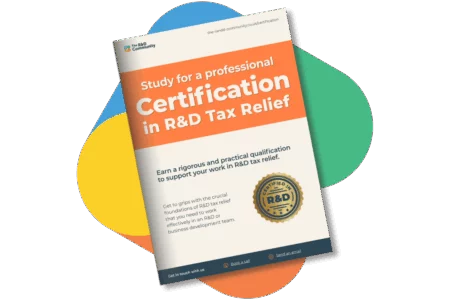One of the key areas of change relates to overseas expenditure. Under the former SME and RDEC Schemes, there were no restrictions on costs relating to overseas expenditure. This meant that SMEs were able to claim for R&D expenditure for contractors and externally provided workers (EPWs), regardless of where the work took place. Companies claiming through the RDEC scheme also had no restrictions on qualifying payments for EPWs, but there were some restrictions on payments to contractors.
But this has all changed under the new schemes. The headline here is that there are restrictions on qualifying payments to overseas EPWs and contractors. This limits the relief that businesses can expect, and might also demand a more considered approach to planning how and where R&D activities are conducted.
Overseas expenditure – the basics
The first thing to highlight is that there are no restrictions on costs related to:
- Staffing
- Consumables
- Software
- Data and cloud computing
- Payments to clinical trial participants
The restriction only applies to payments made for EPWs and contractors. The nature of the restriction is different for each, and there are conditions where the restrictions won’t apply. HMRC’s guidance has all the details (CIRD137000 and CIRD138000), but as is typical, they’re quite confusing. Let’s examine both areas in turn.
Overseas expenditure on EPWs in the Merged R&D Scheme
Expenditure on EPWs that you can include in an R&D claim is almost the same as the older RDEC and SME rules, and depends on whether the payment is made to a connected or unconnected staff provider. But there is one new stipulation: the staff provider must operate PAYE and Class 1 NIC for that worker.
If that condition is met, wholly or partially, then the EPW’s earnings are considered “qualifying earnings”, and a relevant R&D apportionment can be applied. If the staff provider is unconnected, the 65% restriction applies.
This means that staff providers can be based overseas and that R&D activities can be undertaken overseas, as long as the EPWs’ earnings are subject to PAYE and Class 1 NIC. If there’s a mix of workers with different PAYE and NIC classifications, you should only include the qualifying earnings, i.e. for the people subject to PAYE and Class 1 NIC.
Overseas expenditure on contractors under the Merged R&D Scheme
The guidance about restrictions on contracting payments overseas is similarly confusing, but let’s break it down.
Payments to contractors based in the UK qualify for relief as long as the activity undertaken by the contractor is completed in the UK. The same principle applies to overseas contractors – the R&D activity must be completed in the UK.
Where things get fuzzier is when a contractor further subcontracts the work to another party. Let’s look at an example:
A UK company (A) has contracted R&D activities to an overseas company (B), who then further subcontracts those activities to a UK company (C). Under the new schemes, company A can claim as they are the ones that intended the R&D activities to be completed and the R&D activities took place in the UK.
But you might see that there are some potential issues with how this works in practice. What if company A is not aware that company B has subcontracted the work out to company C? Company A won’t be able to make a claim because they have no knowledge or evidence that the work was carried out in the UK.
This means that the original contractor (Company B, in this case) must be totally transparent with its customer (Company A) about the nature and location of the R&D activities. In theory, no problem! But, in practice, these lines of communication are not always open.
Exemptions from overseas expenditure restrictions
Generally, exemptions from the restrictions exist when there is a requirement to undertake R&D overseas, or a requirement to involve overseas workers who are not subject to PAYE and Class 1 NIC.
There are a number of reasons that these requirements can be justified. These include geographical, environmental, and social conditions along with legal or regulatory requirements. Some examples include:
- Medical research on a particular condition that is prevalent overseas and not present in the UK
- Deep ocean research, or research into seismic or volcanic activity where the conditions cannot be replicated in the UK
- Specific testing that requires facilities that do not exist in the UK
- Regulatory requirements necessitating specific accreditation that cannot be provided in the UK
- Access to specific technical expertise in a field of science or technology that cannot be obtained in the UK.
But what if there are instances where the conditions could be replicated in the UK? It boils down to practical, reasonable limitations. Time pressure could be an applicable factor. For example, what if a biological sample must be collected overseas and tested within a certain amount of time (not enough to take it back to the UK)? That would be a reasonable exemption from the overseas expenditure restrictions.
It’s also important to remember that this specific guidance about exemptions does not apply to all project activities, only those undertaken by a contractor and conducted outside the UK. Similar arguments apply to exemptions regarding EPWs. Can the task be undertaken by an EPW subject to PAYE, or does the R&D require a worker based overseas and not subject to PAYE and Class I NIC?
The cost of the R&D activity and the availability of workers are two conditions that are excluded when considering whether an EPW or contractor cost is exempt from the overseas restrictions. So, the use of an overseas testing facility at a fraction of the cost of a similar facility in the UK would not be a valid reason for exemption.
In-depth training resources for R&D advisors
With the new schemes come new challenges for R&D advisors. Many are taking this as an opportunity to take some up-to-date specialist training, to brush up their knowledge. The Certification in R&D Tax Relief is a structure training programme for people working in R&D tax relief, which gives a 360-view of the process from marketing to selling, through technical meetings and claim reports, and finally looking at expenditure and calculating the relief itself. It includes specific training on the new RDEC (merged) scheme and how to align all your processes with the new regulations.
If you’re interested in learning more, the free prospectus has all the details on the training topics and resources, your instructors and the timetable for the next programme.
Download the prospectus for the Certification in R&D Tax Relief





